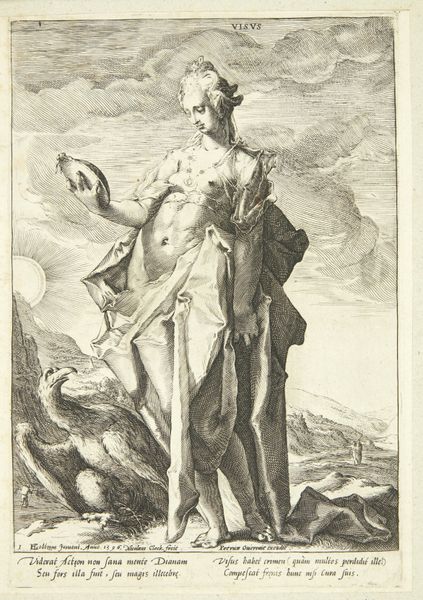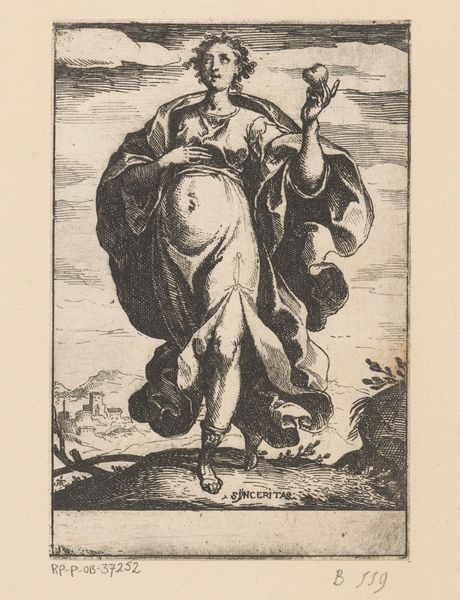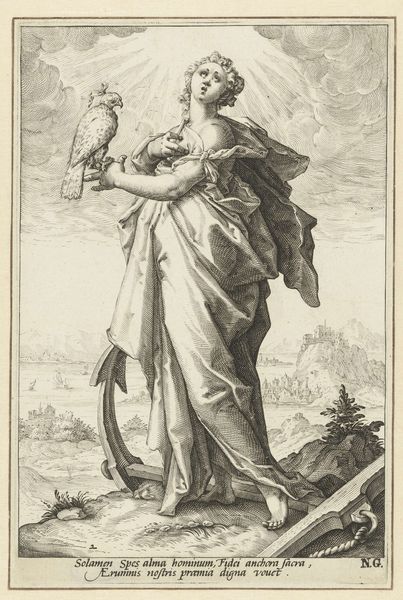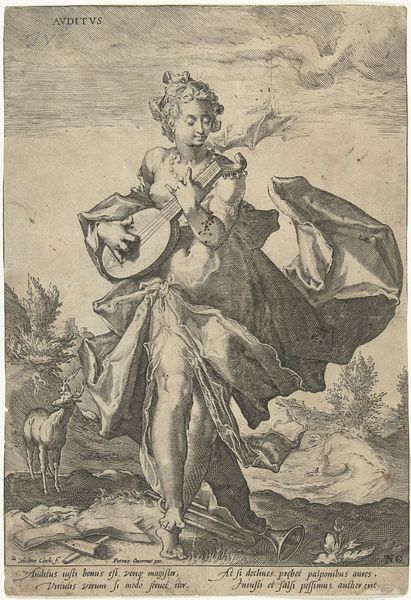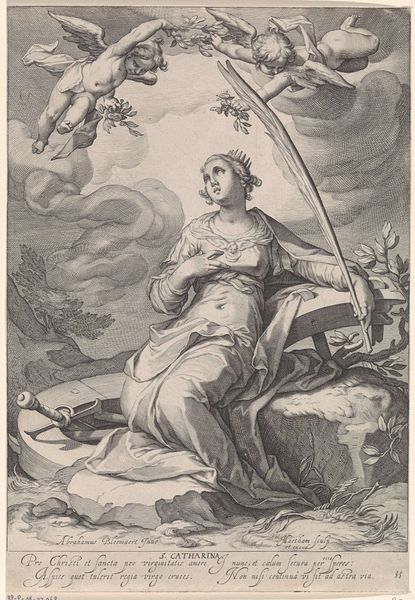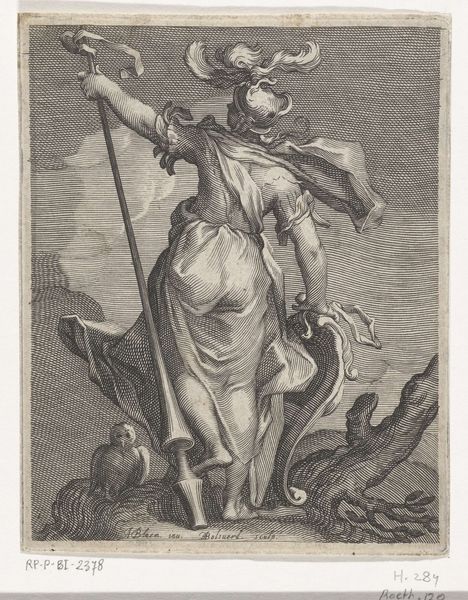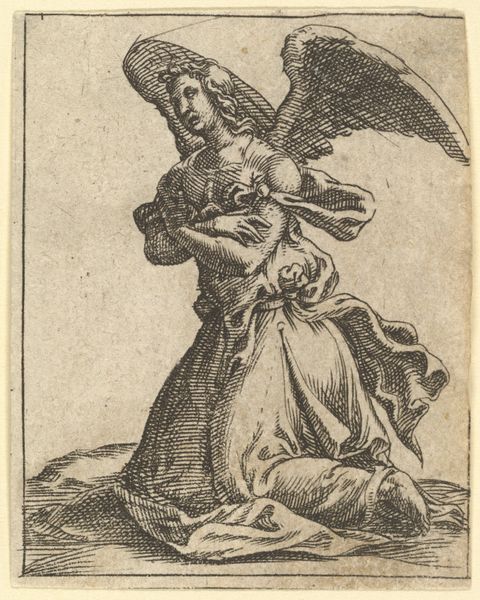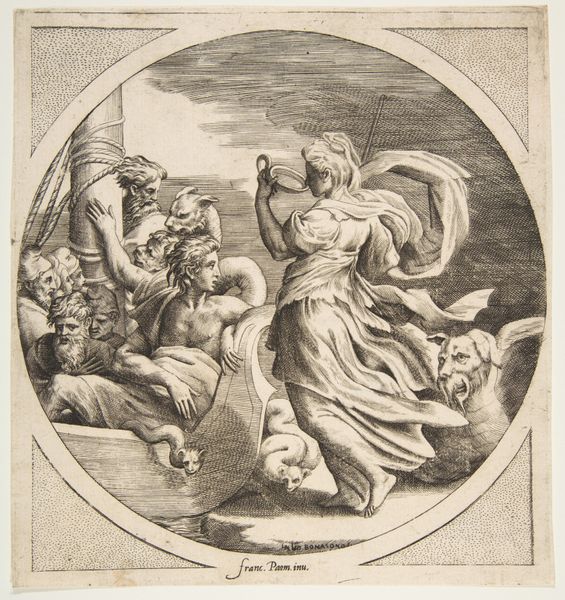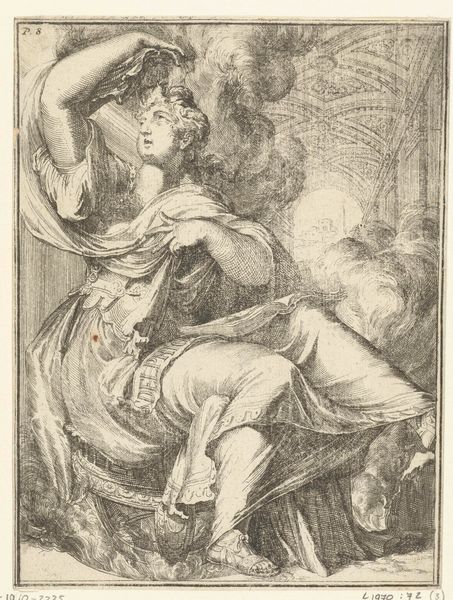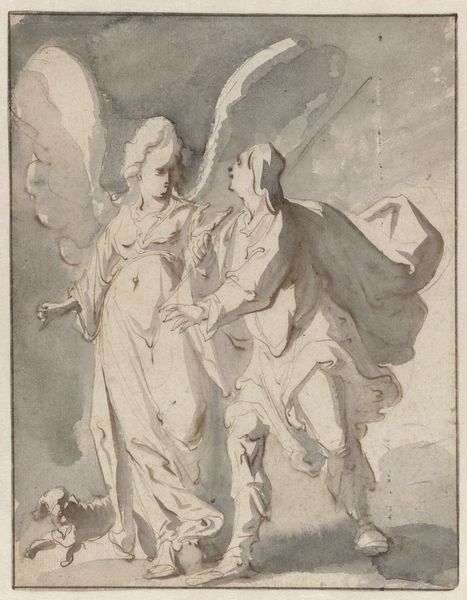
drawing, print, etching, paper
#
drawing
#
allegory
#
baroque
# print
#
etching
#
figuration
#
paper
Dimensions: 142 × 113 mm (image); 143 × 114 mm (plate); 146 × 118 mm (sheet)
Copyright: Public Domain
Curator: Looking at this etching, I feel a strange sense of calm, like gazing upon a powerful but benevolent ruler. The line work is so precise, creating a compelling stillness. Editor: That's Abraham Bloemaert's "Juno," made around 1610. It's part of a series of allegorical prints and drawings, reflecting a resurgence of interest in classical mythology at the time. Bloemaert had this ability to infuse even mythological figures with a palpable sense of humanity, even though they’re intended to symbolize grander concepts. Curator: I get that! Even with all the regal trappings, there's a real softness to her gaze, an almost contemplative expression. It makes her seem relatable, even in her divinity. Do you think the hatching, those fine parallel lines, contributes to that softness? Editor: Absolutely. That's Bloemaert's technique at work. The cross-hatching and the varying density of the lines create volume and shading, bringing the figure to life. But it’s important to remember Juno wasn’t always seen as serene. Juno, or Hera in the Greek pantheon, represented marriage and motherhood, but she could be jealous and vengeful. Bloemaert seems to have deliberately focused on the goddess's power rather than her notorious rage. Curator: And what about that peacock by her side? I assume that's a pretty important detail. It certainly fills up one section of the composition! Editor: Absolutely! The peacock is a classical symbol associated with Juno, or Hera, and serves as one of her main attributes. Here it not only reinforces her identity but perhaps also alludes to the goddess’s famed vigilance as it represents the all-seeing eyes watching from her tail feathers. It also contributes to the idea of regality; she isn’t just standing around, she has power, purpose, and the ultimate royal pet! Curator: Bloemaert gives you the sense she has stepped right out of some vivid, but now half-forgotten, dreamscape. A powerful queen, and powerful imagery, brought vividly into the world through ink and paper. Editor: It’s true; Bloemaert presents this timeless allegory to his audience through a medium that made this imagery relatively more available at the time, democratizing this regal portrayal in a sense. Something that adds a further, historical, richness to the composition, if you ask me!
Comments
No comments
Be the first to comment and join the conversation on the ultimate creative platform.
